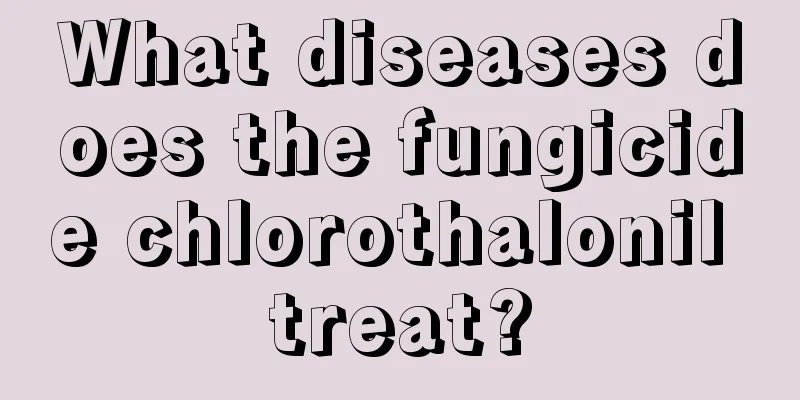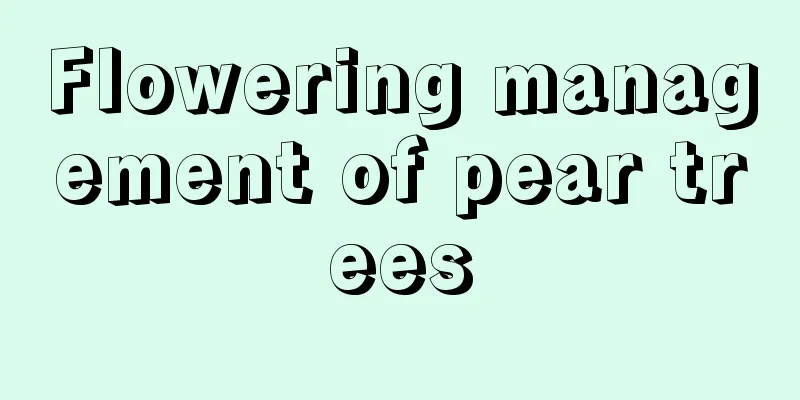What diseases does the fungicide chlorothalonil treat?

|
Thiophanate-methyl is a broad-spectrum fungicide and a protective fungicide. It mainly destroys the activity of glyceraldehyde-3-phosphate dehydrogenase in the pathogen, thereby hindering the metabolism of the fungus and making it lose its vitality, ultimately achieving the purpose of preventing the disease. So what disease does Benomyl fungicide cure? Let’s take a look with the editor below. 1. What diseases can the fungicide Benomyl treat? Thiophanate fungicide is a broad-spectrum, systemic fungicide with both protective and therapeutic effects. Benomyl is mainly used to prevent and control diseases such as downy mildew, blight, late blight, leaf mold, leaf spot, anthracnose, tea cake disease, web cake disease, leaf spot, canker, black spot, etc. caused by pathogens such as the Mastigomycotina and Ascomycotina. These diseases occur on a variety of crops and horticultural plants, such as vegetables , fruits , flowers , etc. The main dosage forms of Benomyl include 75% wettable powder , 50% wettable powder, 40% suspoemulsion, 25% granules, 10% granules, 45% smoke agent, etc. 2. How to use Benomyl? 1. Spray prevention After diluting the chlorothalonil fungicide to the recommended concentration, use a sprayer to evenly spray it on the leaves and stems of crops or horticultural plants to prevent and control diseases such as powdery mildew and downy mildew. 2. Seed soaking Before sowing, soak the seeds in a solution containing the fungicide thiophanate-methyl to increase the seeds' resistance to diseases. 3. Soil treatment Before planting or transplanting, mix chlorothalonil fungicide with the soil to prevent fungal diseases in the soil. 3. Notes 1. When using chlorothalonil fungicide, be sure to follow the dilution ratio and usage method specified in the product instructions or professional recommendations to avoid excessive use or misuse. 2. After applying Benomyl, a dense film can be formed on the surface of plant leaves, fruits and other parts, killing pathogens by contact killing. It has a preventive effect on diseases and its effectiveness period is generally only about 7 days. 3. Benomyl is also highly toxic to fish and bees. Therefore, it should be used with caution in paddy fields and should not be used around the flowering period of crops. Some varieties of grapes, pear trees, apple trees, persimmon trees, jujube trees, and some flower plants are at risk of pesticide damage, and oily substances may aggravate the damage. The above is an introduction to what diseases the fungicide chlorothalonil can treat. Chlorothalonil has good adhesion on the plant surface and is not easily washed away by rain, etc., so it has a longer effective period. Under normal dosage, the effective period is generally about 7-10 days.
|
<<: The correct steps for cutting Monstera and how to care for it after cutting
>>: How can we prevent Monstera from growing too tall? Can Monstera be treated with dwarfing agent?
Recommend
What is the difference between Red Ghost Castle and Fire Festival?
The difference between Red Ghost Castle and Fire ...
Goldfish Chlorophytum breeding methods and precautions
1. Temperature The goldfish plant lives in the tr...
High-yield and high-quality cultivation techniques for Wogan
Wogan is a late-maturing hybrid citrus variety th...
Complete Method of Propagating Kalanchoe
Cutting propagation of Kalanchoe The cutting prop...
Why do we see dry and wet
1. Why The method of watering when the soil is dr...
When is the best time to prune hydrangeas?
Pruning of hydrangea Pruning hydrangeas can reduc...
The best time to plant morning glory in spring
1. Best planting time If you want to plant in spr...
How to propagate mountain roses
Division Except for some individual varieties suc...
Can expired B6 be used to water flowers? What is the effect of watering flowers?
Can expired b6 be used to water flowers? Expired ...
How to keep seeds of Atractylodes lancea and how to harvest seeds of Atractylodes lancea
Method of preserving seeds of Atractylodes lancea...
How to prune Jade Leaves and the precautions
Jade leaf pruning time During the growth period o...
When is the best time to take cuttings of osmanthus trees in the north? How to take cuttings?
1. Cutting time Its cuttings are usually chosen i...
Why are the leaves of gardenia wilting?
1. Too much watering Reason: It likes a humid gro...
What are the poisonous succulents?
Rhinoceros horn The large-flowered rhinoceros hor...
The Flower Language and Legend of Gentiana
Flower language and legend Flower Language Genera...









